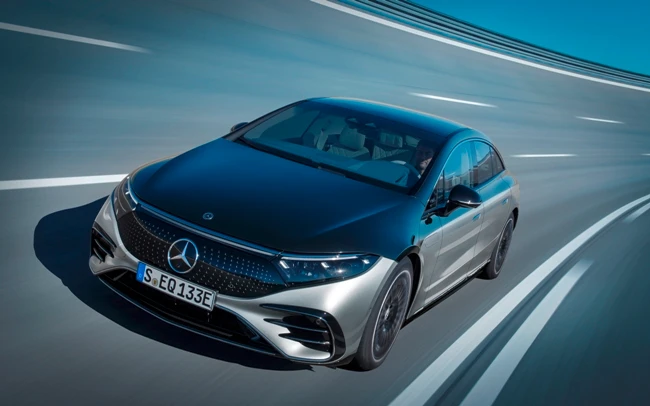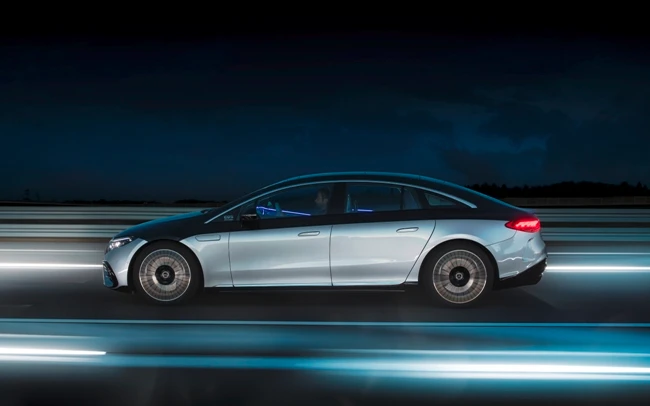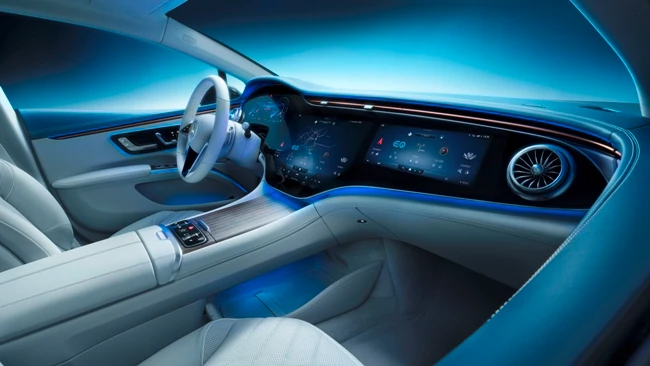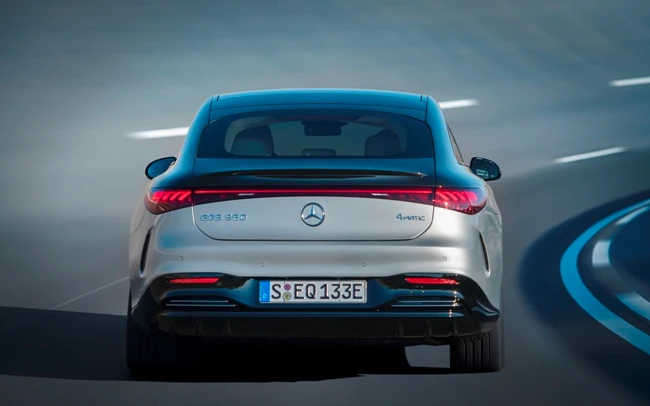Home
What to Do if You Have Squeaky Windscreen Wipers?
There are certain noises in life that raise the hairs on the back of the neck.
Fingernails down a blackboard, the sound of screeching tyres behind you, for some it is even the chewing of a loved one…
However, when you’re driving, there is another one that takes the cake. And it gets a whole lot worse if you head out knowing it is already going to rain. What is it? Well, have you ever flicked the windscreen wiper switch and heard that loud squeak? Yes, we have too…with every back and forth, it is like teeth being pulled.
So if you find yourself in this position, what should you do?

It’s potentially a combination of factors, but happily, it’s a short list. There are only two, three depending on how you look at it, things that are involved. One is the windscreen itself. The second and potentially third are one or both of the wiper blades.
Given the most likely source of the squeaking is the blade/s, these would be the first port of call for a visual inspection. Lift the wiper arms up from the windscreen. Detach the blades from the arms and, using a good torch, inspect the blades themselves. Feel the blades with your fingers. Do they feel soft, malleable, easy to flick back and forth? Or are they dry, cracked, and brittle?
If any signs of a failing blade or blades are noticed, then a visit to your local auto parts retailer is in order to source new wiper blades.
Once new blades are fitted and lowered, get the hose and give the windscreen a good squirt. Activate the wipers and listen. Still noisy? Then having eliminated one part of the equation, the other has to be the windscreen itself.
Specific window cleaning products do a fantastic job, but the condition of the glass is critical.
Again, eyeball the window. One method is to get that torch onto it at night and shine across the window. Look for a straight beam of light bouncing off it. If the reflection looks scattered, it’s likely the same reason we polish cars. The windscreen is likely to be pitted, scratched, and this form of damage will grab onto a wiper like a child to a lollypop. Hence the squeaking that follows.

Depending on the condition of the glass, it may be useful to apply a treatment of IPA (iso-propyl alcohol) to further remove dirt and grime that may have become embedded and not removed by previous cleaning. IPA may also be used, gently, to clean blades that are dirty but fine otherwise. Professional services can offer a polishing of the glass and this does need to be professionally applied.
Unfortunately, the worst case scenario, but one that dramatically lifts the safety factor, is a windscreen replacement. Not only will new and smooth glass reduce friction and allow rainwater to run off easier, forward vision is far less likely to be reduced thanks to light scattering from the tiny scratches.
Auto parts websites have plenty of information about the right replacement blades to suit your car, and this is also one of the most common DIY auto repairs. So if you’re in doubt, don’t hesitate to ask for help.
The 2021 World Car Of The Year Is…
Volkswagen’s ID.4. The electric SUV is the German brand’s fifth WCOTY after: 2013 World Car of the Year – Volkswagen Golf, 2012 World Car of the Year – Volkswagen UP!, 2010 World Car of the Year – Volkswagen Polo, 2009 World Car of the Year – Volkswagen Golf VI.
It’s still unclear as to whether it will make its way to Australia. What will be unavailable is a 77kWh battery, offering a range of up to 520 kilometres. Power is rated as 150kW and torque at 309Nm providing a 0-100kph time of 8.5 seconds. The rear is where the engine is located. Battery charge from a 120kW DC source can provide 320 kilometres of range in a half hour, and the 11kW charger built in can provide 53 kilometres in an hour.

It’s expected that a dual-motor version will be released with power bumped to around 225kW. Chassis wise, it’s a bespoke EV design, and on a length of 4,580mm, it sits neatly between VW’s Tiguan at 4,486mm and the Tiguan Allspace, a seven seater and 4,701mm in length. Crucially, it will offer cargo space of 543L (rear seats up) to 1,575L (seats folded), offset against the Tiguan’s 615L/1,775L and the Allspace’s 230L and 1,655L. Up front is a cargo area of sorts, with the cargo being the 12V battery for the ID.4’s ancilliaries and accessories, plus the various cooling system equipment parts.

ID.4 will be built across three continents and in five factories, highlighting the still “Dieselgate” beleaguered company’s move to a stronger EV presence in a market that is growing worldwide.
Ralf Brandstätter is the CEO of Volkswagen, and he firmly believes in positioning this EV as a mainstream model “with the potential for significant volumes.” Those volumes, he says, are in in Europe, China, and North America. The ID.4 will also “play host” to a range of related brand vehicles from Skoda, Audi, and Cupra.
Future versions of the ID.4 are said to include all-wheel drive and a choice of both batteries and engines. These include a 109kW, 125kW, 129kW or 150kW rear-mounted electric motor with a 52kWh battery the power source for the first two, and a 77kWh battery for the latter. This battery
will also be the source for two all-wheel drive versions, with either 195kW or a mooted GTX packing the 225kW engine.

History Made: Mercedes-Benz EQS
Mercedes-Benz has long been seen as the leader in trickle-down technology being seen in cars some years after featuring in the brand’s higher end saloons such as the S-Class. And with the release of their first all electric luxury vehicle, the EQS, this tradition is set to continue.
The EQS will offer ranges of up to 770 kilometres and will pack a powertrain of up to 385kW. A performance version is said to be in development and with up to 560kW. It will sit within the expectations of the S-Class saloon segment. The vehicles will be rear axle driven however the models fitted with the 4MATIC will have a front axle engine also.

Mercedes-EQ, EQS, V 297, 2021
Mercedes says the initial models will be the EQS 450+ with 245 kW and the EQS 580 4MATIC with 385 kW. The rated power consumption rates are quoted as 20.4-15.7 kWh/100 km, and 21.8-17.4 kWh/100 km. New technology for the batteries has them enabled with a higher energy density. Of the two batteries to be available, the larger will have a usable energy content of 107.8 kWh. Mercedes says this is around 26 percent more than the EQC, their EV SUV.
It’s tech that is bespoke for M-B, with the software having been fully developed by the company and allowing over the air updates. This keeps the management system up to date, and for the life cycle of the battery. In respect to the charging rates, the DC fast charge stations pump in 200kW( and 300km in around 15 minutes. On a home charger system the EQS charges up to 22kW with AC power. The software will also allow intelligent charging programs and battery-saving charging.
A key component of EV technology is is energy recuperation. The EQS uses a program called DAuto, which can recuperate energy from deceleration to zero without the need for the brake pedal to be utilised. Smart cruise tech employs the same mechanisms with vehicle traffic ahead of the EQS. Intelligent energy recovery is situation-optimised with the aid of ECO Assist and acts with foresight, taking into account traffic conditions or topography, among other things, and up to 290kW can be generated. The driver also can set three energy recovery levels and the coast function via paddle shifters on the steering wheel.

Mercedes-EQ, EQS, V 297, 2021
Also available as OTA or over the air will be the activation of vehicle functionalities. This includes two driving programs for younger aged drivers and for service staff. Light entertainment in the installation of games will also be available. Plus the updates will allow personal preference settings such as changing the steering angles for the rear wheel steering from the standard 4.5 degrees to the maximum 10 degrees. Planned is the activation of subscription services and testing on future programs.
Aerodynamics plays a big part in vehicle fuel efficiency and the new EQS has plenty of aero in the design. in fact, it’s currently rated as the most aerodynamic car available with a drag coefficient of 0.20cD. In conjunction with that slippery body is the reduction of wind noise at speed, improving comfort levels.
The need for aero is due to the EQS being on a new chassis architecture to provide a home for the powertrain. Mercedes-Benz calls the design language Sensual Purity, with smooth, organic, lines, a reduction in the join lines in panels, the fastback styling. The front end is a “Black Panel” look with the headlights running seamlessly into the grille panel which can be optioned with a 3D star pattern to complement the three-pointed Mercedes star.
Embedded throughout the EQS is a network of sensors, up to 350 of them, depending on specification. Amongst the types of information recorded are distance travelled, ambient lighting conditions, acceleration rates and speeds achieved. AI then utilises these datasets to adjust the car on the fly. This includes monitoring the battery charge levels in respect to the distance required to see the next charging point thanks to the onboard Navigation with Electric Intelligence.

Mercedes-EQ, EQS 580 4MATIC, Interieur, Nevagrau/ Iridescentblau, AMG-Line, Edition 1; MBUX Hyperscreen; ( Stromverbrauch kombiniert: 20,0-16,9 kWh/100 km; CO2-Emissionen kombiniert: 0 g/km) // Mercedes-EQ, EQS 580 4MATIC, Interior, neva gray/ iridescent blue, AMG-Line, Edition 1; MBUX Hyperscreen ; (combined electrical consumption: 20.0-16.9 kWh/100 km; combined CO2 emissions: 0 g/km)
Being a class-setting EV, the EQS packs in some high-end green technology for the passengers. An example is the HEPA filter than can be set to fully clean the air inside the cabin before passengers enter with the onboard data system, MBUX, able to display particulate levels inside and out. Recycled materials are used in areas such as the carpets. The manufacturing process is fully carbon-offset as well.
The MBUX Hyperscreen is the absolute highlight in the interior. This large, curved screen unit sweeps almost from A-pillar to A-pillar. Three screens sit under a cover glass and appear to merge into one. The 12.3-inch OLED display for the front passenger gives him or her their own display and control area. The entertainment functions are only available there while the car is being driven in accordance with the country-specific legal regulations. Mercedes-EQ relies on an intelligent, camera-based locking logic: if the camera detects that the driver is looking at the front passenger display, it is automatically dimmed.
As part of its Ambition 2039 initiative, Mercedes-Benz is working on offering a carbon-neutral new car fleet within 20 years from now. By as early as 2030, the company wants more than half the cars it sells to feature electric drive systems – this includes fully electric vehicles and plug-in hybrids. In many areas, Mercedes is already thinking about tomorrow today: the new EQS is designed to be correspondingly sustainable. The vehicles are produced in a carbon-neutral manner, and resource-saving materials such as carpets made from recycled yarn are used. This is because Mercedes-Benz considers the entire value chain, from development and the supplier network to its own production. Mercedes-Benz AG has had its climate protection targets confirmed by the Science Based Targets Initiative (SBTI).

Mercedes-EQ, EQS, V 297, 2021
Australian Car Sales Continue The Upwards Swing.
VFACTS and the FCAI have released the sales figures for March of 2021 and it’s good news. March 2021 saw 100,005 units moved, an increase of 18,315 over March of 2020. In a year to date sales sense it’s 263,648, up from 233,361 for the same time last year.
SUV sales were up 32 per cent and Light Commercial vehicles were up by 28 per cent. Eight of the top ten selling vehicles for the month were SUVs or Light Commercials, driven by increasing demand from the Private buyers.
Category wise, the passenger segment went down from 21,783 to 21,360. The SUV figures were 51,705 compared to 39,162 in March 2020. LCVs were 23,255, up from 18,165 in March 2020.
In the Passenger car segment Hybrids saw a slight increase, with 2,658, up from 2,441 in March 2020. Hybrid SUVs also saw an increase, with 2,190 in March 2020 up to 3,890 this year. PHEV SUVs doubled from 119 to 258.
For the Light Cars (under $25K), MG’s MG3 took the crown, with 1,238, an increase of over 30%. Third place was a real battle with Suzuki Swift (471), Kia Rio (452), and Suzuki Baleno (432) making a good sales fight, whilst in between was the Toyota Yaris on 636.
Small Cars (under $40K) and Toyota’s Corolla was under pressure from Hyundai’s i30. The Corolla moved 2,892 against 2,514. Third was tight with the Mazda3 just pipping the Kia Cerato, with 1,577 to 1,453. In the plus $40K range it was a battle between the German duo of BMW and Mercedes-Benz. The A-Class stole first on 358, just nudging the 1 Series on 340. The 2 Series Gran Coupe took third on 222.
For the Medium segment it was the Toyota Camry out in front in both the under and over $60K bracket. 852 units moved, ahead of the BMW 3 Series on 567, and the Mercedes-Benz C-Class on 364. Camry, though, was down substantially from 2020, with 1,332 last year.
Kia’s Stinger continued to win the Large Sedan, with 173, down by just two from last year. Porsche’s new Taycan, a fully Electric Vehicle, entered with 161, six ahead of the Mercedes-Benz E-Class.
Kia also outclassed the competition in the People Mover segment, with the Carnival reaching 616, up from 475 in March 2020. Honda’s Odyssey consolidates second with 162, up from 130.

Volkswagen snared third with its new Multivan for 121. In the over $60K segment it was Mercedes, Mercedes, and Toyota, with the V-Class (42), Valente (24) and Granvia (22), duking it out.
There’s been a change in the Sports car segment though. Ford’s Mustang still sold the most with 130 in the under $80K segment, however was outsold by the Mercedes-Benz in the over $80K by the C-Class Coupe and Convertible on 139. The 4 Series from BMW snared 110 for third in both segments.
Moving into the SUV segment and in the Light SUV category Mazda’s CX3 pummeled the opposition in the sub-$40K bracket with 1,744. Toyota’s Yaris Cross slid quickly into second on 846. For third it was another tight battle with Volkswagen’s T-Cross (655) edging out the Hyundai venue and Kia’s new Stonic on 636 and 624.
For the under $40K Small SUVs the Chinese made MG ZS stole the show on 1,510. Hyundai’s recently revamped Kona saw 1,462, just ahead of the Mazda CX-30 on 1,225. Nissan’s Qashqai was the only other entrant into the 1,000 club, squeaking in on 1,003.
Above $40K and Audi’s Q3 found 852 homes, ahead of the Volvo CX40 with 416. 279 and 249 went to Germany, with the X1 from BMW and GLA-Class from Mercedes. Mazda’s CX-5 gave the RAV4 a shake in the Medium sub-$60K, with Toyota selling 3,522 over the Mazda’s 3,022. Nissan’s X-Trail performed solidly for 1,932, just ahead of Subaru’s Forester with 1,439. Mitsubishi’s Outlander 1,085, just ahead of Honda’s CR-V on 972.
In the plus $60K bracket, only Mercedes cracked the 600 mark on 607 for the GLB. The GLC-Class wagon was a distant second with 374, with Audi Q5 on 336. The Lexus NX and BMW X5 went nose to nose on 295 and 291.

In the Large SUVs and under $70K it was Subaru’s outgoing and incoming Outback with 1,341, ahead of the 1,211 for Toyota’s Prado. 1,179 is the number for the Isuzu M-UX. Mitsubishi’s Pajero Sport sold 886, whilst their ancient Pajero, due to be cancelled at the end of the year, sold 292.
Over $70K and it was the X5 on 309. Behind it was some close infighting with the Lexus RX (185), Range Rover Sport (181), and GLE-Class wagon (176) providing stiff competition for each other. Above that it’s a two horse race in the Upper large under $100K, with the LandCruiser and Patrol on 2,244 and 305, selling nearly eight times as many than the full field in the over $100K bracket.
In the ute segment, the 4×4 pickup and cab-chassis bracket had HiLux on 4,068 ahead of Ford Ranger with 3,710, continuing the Japanese brand’s number one position. Mitsubishi’s 4×4 Triton moved 2,223 for third. Isuzu’s D-Max was fourth on 1,338, ahead of the Mazda BT-50 and sibling under the skin, on 1,177.
Notable in those figures is the rise of the sharply priced Chinese built MG range, and the continued growth of non-PHEV Hybrids. Overall for March 2021, Toyota sold 21,319, with Mazda on 10,785. They were the only two brands to see double-digits for the month. Hyundai continues to outpace its Korean sibling, with 6,852 over 5,802. Mitsubishi moved 6,430 whilst Nissan sold 4,559, under the 5,977 of Ford. MG? 3,303 and ahead of Honda.